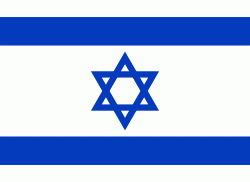Mazkeret Batya (Mazkeret Batya)
Mazkeret Batya (מַזְכֶּרֶת בַּתְיָה) (lit. "Batya Memorial") is a local council in central Israel located southeast of Rehovot and 25 km from Tel Aviv. Mazkeret Batya spans an area of 7,440 dunams (7 km²). In it had a population of. The mayor of Mazkeret Batya is Gaby Gaon.
Mazkeret Batya was established on November 7, 1883 by 11 ultra-orthodox farmers from Russia, one of which was Yaakov Laskovsky, and 7 local Jews. It was originally called Ekron, the first agricultural settlement of the Hovevei Zion movement. The land was purchased by Baron Rothschild in an early attempt to introduce Jewish farming in Palestine. Rabbi Shmuel Mohilever was instrumental in mobilizing funding and organizing the settlers. Mohilever's remains were later reinterred in the Mazkeret Batya cemetery. In 1887 the name was changed to Mazkeret Batya, in memory of Betty Solomon de Rothschild, mother of Baron Edmond James de Rothschild. The history of the founding is described in the book "Rebels in the Holy Land", by the historian Sam Finkle.
The economy of the village was originally based on dry farming, which continued even after the Mekorot Company constructed a pipeline to bring water from Rehovot. In 1947, Mazkeret Batya was home to 475 people.
According to a census conducted in 1922 by the British Mandate authorities, Mazkeret Batya (then Ekron) had a population 368 Jews. During the Mandate era, a Jewish police station was established in Mazkeret Batya to safeguard the local roads. In the War of Independence, convoys to besieged Jerusalem left from Mazkeret Batya. A field hospital operated there to care for Haganah fighters wounded at Latrun.
According to one source, at the end of the British Mandate for Palestine, the British tried to hand the nearby Aqir airfield and camp to the Palestinian Arabs, apparently without success.
Due to its proximity to Tel Aviv, Mazkeret Batya has recently experienced a growth spurt. Mazkeret Batya is a mixed community of religious and secular Jews. Historic landmarks include Beit Ha'Itut (Signal House), the Great Synagogue, Beit Meshek HaBaron ("The Baron's Farmhouse", now housing a cultural center), the saqiya-type water-rising system with its wooden wheels, well and pool, and an old farmyard.
Mazkeret Batya was established on November 7, 1883 by 11 ultra-orthodox farmers from Russia, one of which was Yaakov Laskovsky, and 7 local Jews. It was originally called Ekron, the first agricultural settlement of the Hovevei Zion movement. The land was purchased by Baron Rothschild in an early attempt to introduce Jewish farming in Palestine. Rabbi Shmuel Mohilever was instrumental in mobilizing funding and organizing the settlers. Mohilever's remains were later reinterred in the Mazkeret Batya cemetery. In 1887 the name was changed to Mazkeret Batya, in memory of Betty Solomon de Rothschild, mother of Baron Edmond James de Rothschild. The history of the founding is described in the book "Rebels in the Holy Land", by the historian Sam Finkle.
The economy of the village was originally based on dry farming, which continued even after the Mekorot Company constructed a pipeline to bring water from Rehovot. In 1947, Mazkeret Batya was home to 475 people.
According to a census conducted in 1922 by the British Mandate authorities, Mazkeret Batya (then Ekron) had a population 368 Jews. During the Mandate era, a Jewish police station was established in Mazkeret Batya to safeguard the local roads. In the War of Independence, convoys to besieged Jerusalem left from Mazkeret Batya. A field hospital operated there to care for Haganah fighters wounded at Latrun.
According to one source, at the end of the British Mandate for Palestine, the British tried to hand the nearby Aqir airfield and camp to the Palestinian Arabs, apparently without success.
Due to its proximity to Tel Aviv, Mazkeret Batya has recently experienced a growth spurt. Mazkeret Batya is a mixed community of religious and secular Jews. Historic landmarks include Beit Ha'Itut (Signal House), the Great Synagogue, Beit Meshek HaBaron ("The Baron's Farmhouse", now housing a cultural center), the saqiya-type water-rising system with its wooden wheels, well and pool, and an old farmyard.
Map - Mazkeret Batya (Mazkeret Batya)
Map
Country - Israel
 |
 |
| Flag of Israel | |
The Southern Levant, of which modern Israel forms a part, is on the land corridor used by hominins to emerge from Africa and has some of the first signs of human habitation. In ancient history, it was where Canaanite and later Israelite civilizations developed, and where the kingdoms of Israel and Judah emerged, before falling, respectively, to the Neo-Assyrian Empire and Neo-Babylonian Empire. During the classical era, the region was ruled by the Achaemenid, Macedonian, Ptolemaic and Seleucid empires. The Maccabean Revolt gave rise to the Hasmonean kingdom, before the Roman Republic took control a century later. The subsequent Jewish–Roman wars resulted in widespread destruction and displacement across Judea. Under Byzantine rule, Christians replaced Jews as the majority. From the 7th century, Muslim rule was established under the Rashidun, Umayyad, Abbasid and Fatimid caliphates. In the 11th century, the First Crusade asserted European Christian rule under the Crusader states. For the next two centuries, the region saw continuous wars between the Crusaders and the Ayyubids, ending when the Crusaders lost their last territorial possessions to the Mamluk Sultanate, which ceded the territory to the Ottoman Empire at the onset of the 16th century.
Currency / Language
| ISO | Currency | Symbol | Significant figures |
|---|---|---|---|
| ILS | Israeli new shekel | ₪ | 2 |
| ISO | Language |
|---|---|
| AR | Arabic language |
| EN | English language |
| HE | Hebrew language |















